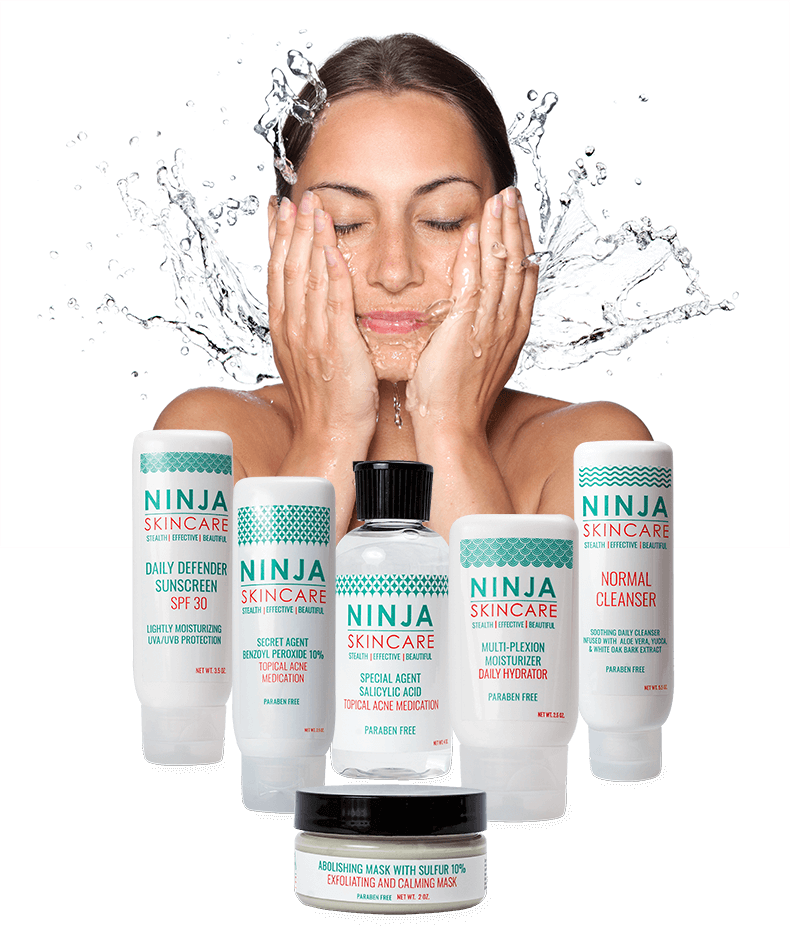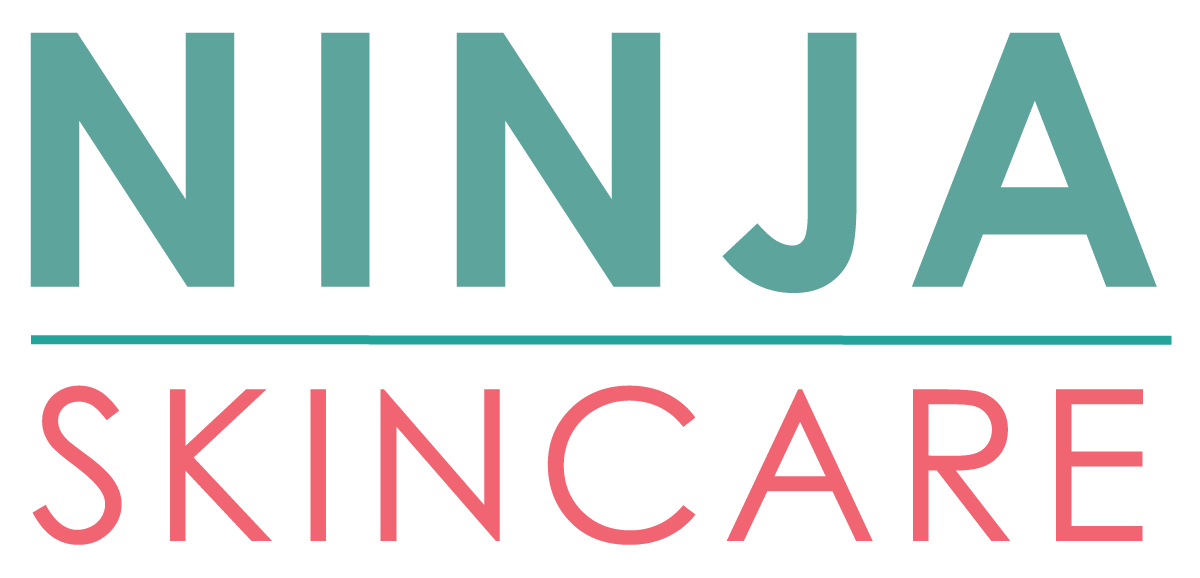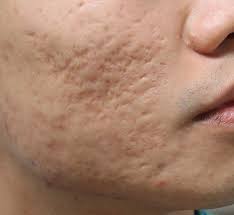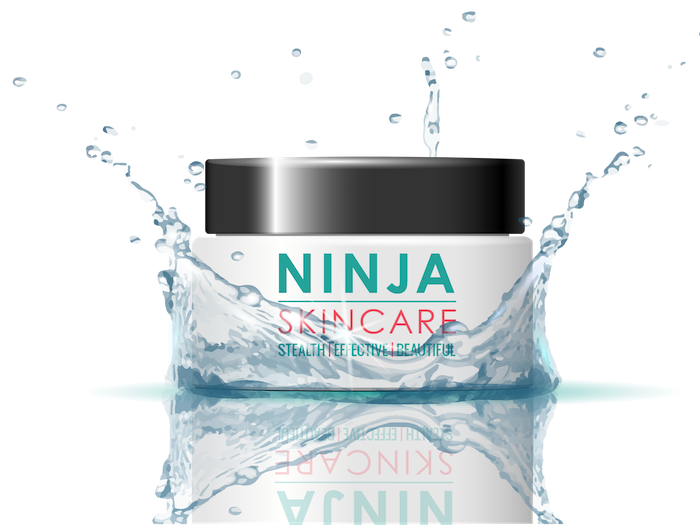Acne Scarring – a Detailed Report on Preventing and Reducing Acne Marks
September 7, 2016
Acne Scarring – the Whats, Whys and Hows
We get calls every day about one topic in particular – acne scarring. For people who have suffered for years from acne and finally found the treatment that works for them, acne scarring is a painful reminder of a not-so-pleasant time in their lives.
The good news: if acne is treated early enough, with effective topical treatments, you will likely avoid acne scarring.
But for those of you who DO have acne scarring left over from previous breakouts, there are treatments available to help minimize those marks.
What is scarring
When the skin becomes damaged or inflamed it will leave a mark where it has repaired itself from some type of trauma or injury. If the wound is superficial then the mark will fade with time. However, if the wound is deeper and in the dermal layer of the skin a scar will form on the skin.
The cause of acne scarring
Each acne blemish is a wound inflicted on the skin and based on the size and depth of the pimple it will produce either a superficial or dermal injury to the skin.
There are several forms of acne lesions. These include blackheads, papules, pustules (whiteheads) and cysts. All acne breakouts form in the hair follicles. Most pimples form close to the skin’s surface so when the lesion erupts, the injury does not involve many surrounding healthy skin cells. The resulting darker mark is temporary and will heal quickly.
More serious acne scarring develops when there is a deep rupture in the hair follicle lining. The infection bleeds out into the dermal layer of the skin and destroys healthy skin cells. To repair the damage, the body will produce new collagen. Unfortunately, the repair job will never look as good as the original smoother skin.
Types of acne scars
There are two types of acne scars that develop when the skin has been damaged deep in the hair follicles. Hypertrophic scars result in a bump on the skin and atrophic scars cause a depression in the skin.
A keloid is an example of a hypertrophic scar where the body heals over the injury by producing too much scar tissue. Unlike other hypertrophic scarring where the scar tissue remains within the borders of the injury, a keloid will continue growing beyond the border of the original wound.
Atrophic scars that leave an indentation in the skin are more common than hypertrophic scars. Examples include ice pick, boxcar and rolling scars. These develop when there is loss of skin tissue due to extreme acne breakouts.
Scar prevention
As they say, an ounce of prevention is worth a pound of cure and this applies to acne scarring as well.
The best way to prevent scarring is to prevent inflammatory acne breakouts. Because pimples are caused from the retention of dead skin cells in the hair follicles, it’s paramount to keep the dead skin cells sloughing out of the hair follicles on a regular basis to prevent new breakouts. Daily use of topical medications that contain exfoliating agents such as benzoyl peroxide, sulfur, resorcinol, glycolic and salicylic acids will prevent the hair follicles from getting severely clogged. Using skincare products such as makeup, moisturizer, and sunscreen that are free from oils that stick to the insides and the opening of the hair follicles is key to preventing pimples from forming.
Another way to prevent acne scarring is to avoid aggressively picking your pimples. When too much downward pressure is applied on a blemish, the infection goes deeper into the skin and the hair follicle may rupture. This deposits bacteria into surrounding healthy skin tissue and is how an inflamed cyst forms. If you have a whitehead or blackhead that is easily removed with very LITTLE pressure then you can safely extract or drain the pimple….but don’t use your fingernails!!! They will gouge out healthy epidermal skin cells and cause indentations and spots of discoloration to form.
Scar removal
Creams:
A quick and easy way to lessen the appearance of recent marks that are red, irritated and swollen is to apply a store bought cortisone cream. Cortizone creams are effective at temporarily reducing inflammation, however they are not intended to be used long term as they may cause other skin issues to develop.
Often acne scars are slightly darker than your natural skin tone. For marks that are brown and not red in appearance (hyperpigmentation), skin lighteners may be effective. Hydroquinone is a well-known and popular skin lightener most recommended by doctors and skin experts. Natural lighteners include Kojic Acid (a mushroom derivative), arbutin and vitamin C. If you are looking at lightening agents, make sure you verify that the active ingredient is one of these in order to achieve the best results. Also limit sun exposure and liberally apply a sunscreen with SPF 30 to avoid tanning the marks darker and wear a wide brimmed hat when in direct sunlight.
Laser/fillers:
Many people have success with laser treatments to even out the surface of the skin. Laser has also been shown to promote new collagen creation which is particularly effective at plumping up acne scars. Additionally, there are fillers which are injected into deep acne scars to remove the deep indentation. That said, the downside of fillers is that although they are quick to do and have instant results they do not last forever. You may need to make repeat trips every 4-6 months to get “touched up.”
Patience:
Time will heal… to an extent. Right after a particularly bad cystic acne breakout, you might be at your wits’ end with the acne scarring you see on your face. It will likely be red and inflamed and you may think the mark is permanent. Not necessarily so! After a few weeks, new blood vessels develop in the damaged area as your body’s own internal repair crew gets to work. Those vessels will deliver the much needed nutrients to the area and help it recover, hence the pinkness of new scars. A couple of months later, collagen will start to form in the injured areas, slowly filling up the indentations. Unfortunately as with all healing, this repair process decreases with age. For severe injuries, it could take up to a year before this healing process is complete.



 Get a ZERO obligation consultation with an acne-fighting Ninja!
Get a ZERO obligation consultation with an acne-fighting Ninja!
